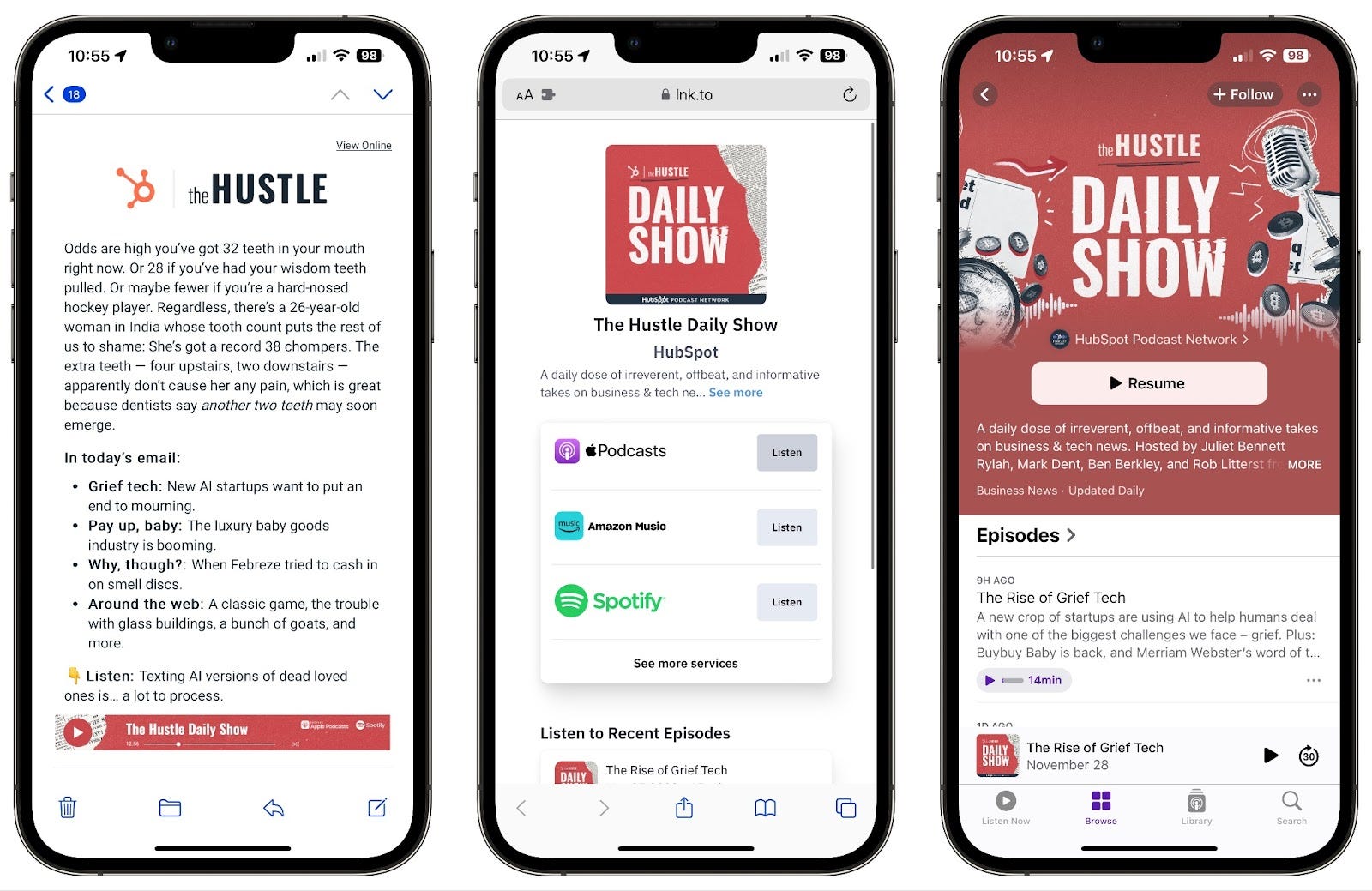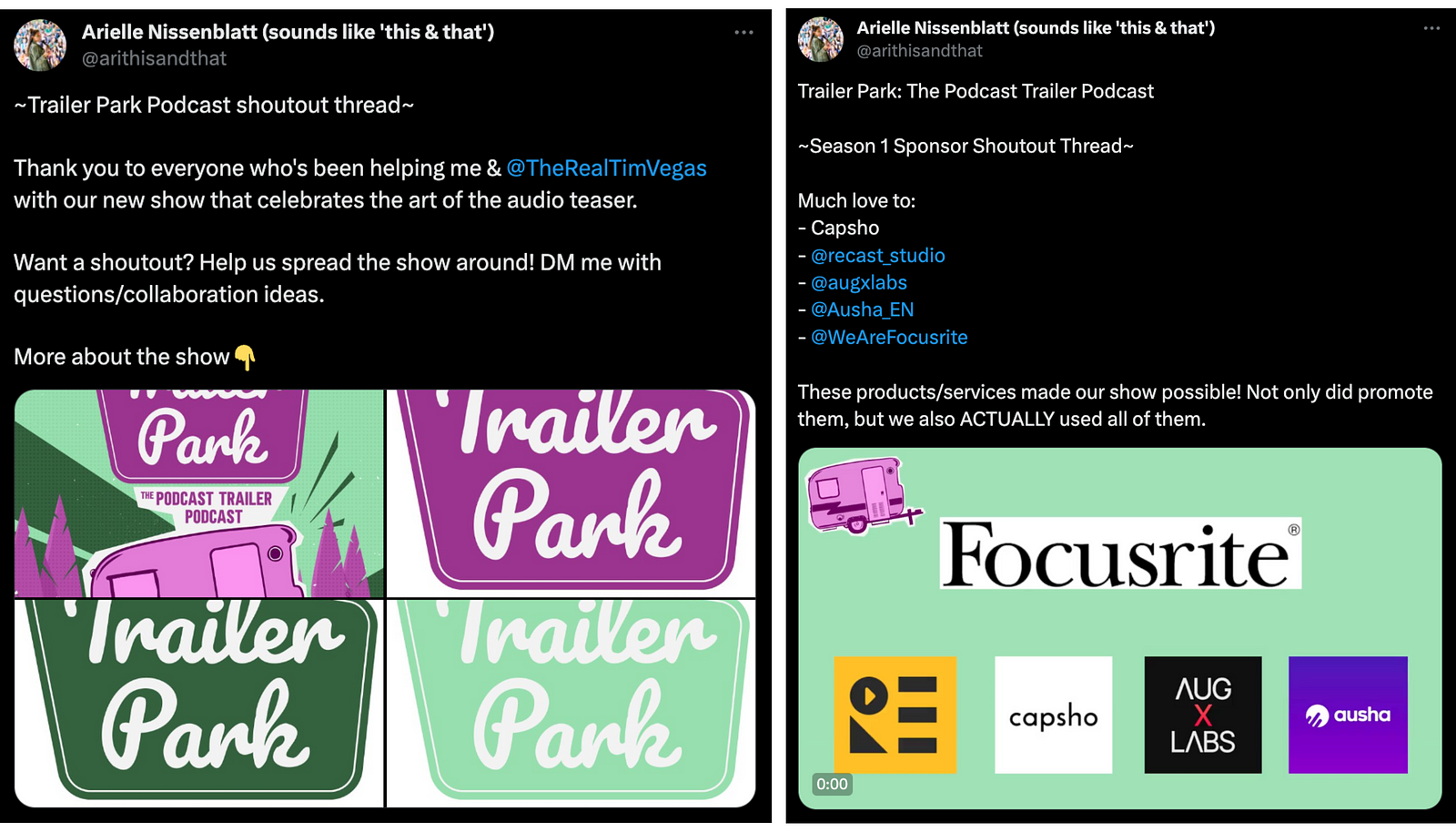What Worked in 2023: Audience Development

2023 was hard on many of us economically. We started the year with a rocky economic outlook, and that tone seems to have stuck all the way through to December (in fact, my first blog post of the year focused on a “looming recession”). So, this year we’ve decided to completely revamp our year-end post. Rather than gathering a collection of predictions for next year, we’re taking a decidedly positive spin and focusing on what went right in 2023. We’ve asked industry leaders to share their biggest lessons from the year in the hopes that these learnings will help us all get stronger, smarter and ready for a better 2024.
We’ve split this retrospective into three parts. You can check out the other two parts:
The competition for listeners’ attention is getting tougher every year. The tactics that worked even two years ago to grow an audience are less effective today. So we surveyed a growing group of audience growth experts about what did work in 2023, to help us all prepare for 2024.
Responses have been lightly edited for length and clarity.
What worked to drive podcast listenership?
… leveraging owned channels
“At Bumper, we encourage our clients to make the most of their existing owned channels. A great example of this is how The Hustle promotes podcasts within their popular daily email newsletter. It’s a large-reach channel, focused on readers who care about business and tech news. I read it every weekday morning. Every day, The Hustle newsletter prominently features the newest episode of The Hustle Daily Show podcast. This gets the show in front of exactly the right audience on a regular basis, and ties the newsletter and podcast together in a really cohesive way.”

– Dan Misener, Co-founder, Bumper
… booking 360 promo swaps and guest spots
“In 2023 we put a major emphasis on our cross-promotional efforts, with the goal of booking 360 promo swaps and guest spots within the year through collaboration between our marketing and content teams. Our approach primarily revolved around thoughtful guesting outreach during show launches and providing additional guesting support for our network shows throughout their terms. One notable win from this initiative was booking the hosts of our podcast, Exploration: LIVE!, on Las Culturistas. Following the episode’s airing, Exploration: LIVE! experienced over a 50% increase in listenership plus a ton of love from Las Culturistas fans on social.”
Check out the crossover episode!
– Marika Brownlee, Director of Marketing, Headgum
… finding a podcast audience where they are
“Podcast-focused platforms (podcast apps, audio feeds, etc.) continued to show their effectiveness for earned marketing (cross-promos, feed/trailer drops, guest opps/swaps) and paid marketing (app and audio) initiatives in 2023. Finding a podcast audience where they are — listening to and engaging with podcast content — continues to be an essential and successful attribute within podcast marketing. Here’s an example of a feed drop with perfect alignment, as Gravy (the James Beard Award-winning food podcast produced by Southern Foodways Alliance and APT Podcast Studios) shared an episode of WUNC’s The Broadside (the weekly podcast focused on amplifying news and culture from the American South to uncover how it matters to all).”
– Joni Deutsch, VP of Marketing and Audience Development, The Podglomerate
… using precise audience targeting
“What has consistently worked best for us are highly targeted audio campaigns on other podcasts, from a known and trusted voice (typically the host of the show). We focus on figuring out exactly who we want to reach, and what we want to say to those people that will be meaningful for them — a ‘plus’ in their lives. For example, reaching Canadians who love investigative journalism but don’t love Canadian news, by buying geo-targeted ads on American news podcasts that they might already listen to.”
– Miriam Johnson, Podcast Growth Specialist, Bumper
… deepening your relationship with the right audience
“I think success boiled down to finding the perfect audience and creatively finding a good way to partner with that audience. For example, working with Kelly Corrigan of Kelly Corrigan Wonders, we identified good fits and pitched reverse interviews, inviting Kelly on other podcasts to interview the host. It’s an example of something we’re trying to do more and more — offer something back to our partners so that everybody wins. In this case, the partner wins because their audience is used to hearing them be the interviewer. Hearing them as an interviewee lets their audience get to know them in a new light. In some cases, we could offer to run the interview on our feed, too. Less and less we are straight up pitching our clients for one-off interviews. Once we find the right audience, we want to deepen and strengthen that relationship.”
Check out an example of this approach!
– Lauren Passell, Founder, Tink Media
…turning a podcast launch into an event
“I usually help a lot of other people launch and grow podcasts, which is really fun and challenging and meaningful. But this year, I launched a new podcast of my own — Trailer Park: The Podcast Trailer Podcast — and it let me put my best practices to use. I went all out with promo for this show, especially leading up to the launch. We created four unofficial launch-related events: we dropped a pre-trailer (30-ish seconds), a trailer (1.5 minutes), and a teaser episode (three minutes), all before the *official* launch of the show a few weeks after. This allowed us to make a “moment” out of these four episode drops, which meant that you couldn’t scroll on social and *not* see the show in one form or another. The hype lasted throughout season one and spurred a lot of growth throughout.”
Check out the posts here and here.

– Arielle Nissenblatt, Community Marketing Manager, Descript
… curating podcast pitches through email
“Leading with email capture and pitching curated podcast episodes on the back end based on subscriber segmentation. Once this automated system is in place, leading with either a newsletter or lead magnet as the primary CTA across all channels (including paid acquisition) and allowing people to discover the podcast once they’re already in the email ecosystem. We’ve been able to track clicks in the recommendation emails to see that listeners are in fact clicking through and listening to the episodes which is often their first interaction with the show (based on audience interviews and survey responses).”
– Jeremy Enns, Founder, Podcast Marketing Academy
![]()
How do you measure success?
… combining qualitative and quantitative data
“Quantitative data points (e.g., downloads and conversion rates tracked via Chartable SmartLinks and SmartPromos) are just as important as qualitative notes (e.g., knowing who your audience is, where they are going for information and inspiration, and why they should care about your podcast). If you’re not already writing down your goals, tracking your progress (podcast hosting platforms make analytics tracking a breeze, and audience surveys in your podcast feed are a great way to determine what you’re doing well and which apps/podcast feeds you should look towards for marketing efforts), and reassessing your campaign (whether weekly, bi-weekly, or monthly), then don’t delay — make it a podcast resolution for 2024!”
– Joni Deutsch, VP of Marketing and Audience Development, The Podglomerate
… trying new tools to track beyond the download
“Rather than simply measuring clicks and downloads, Linkfire for Podcasts links can measure actual listening behaviour, and attribute it back to specific marketing channels. For the first time, we’re able to understand what happens beyond the click, and beyond the download. Sure, a listener might have downloaded an episode, but did they listen? Did they hit the ‘Follow’ button? We can answer these questions now. Game-changer.”
– Dan Misener, Co-founder, Bumper
… combining attribution tracking with changes in listenership
“For any cross-promo initiative we measure success by using attribution tools and by monitoring changes in overall listenership across the weeks a spot runs. For promos we were able to track using attribution, guesting saw a roughly 5% audience conversion which is significantly higher than any trailer or host-read ad swaps we’ve run which historically come in anywhere between 0.2–1% conversion.”
– Marika Brownlee, Director of Marketing, Headgum
![]()
Pacific Content’s Take
“At Pacific Content we are working to grow and engage our audiences on many fronts: leveraging both traditional methods like using client’s owned channels while also testing new tech tools and building new partnerships. The industry landscape is changing rapidly and what went right for us is that we have adapted with it. For each client, we build an audience engagement and growth plan that plays to their strengths. For example, Nastaran Tavakoli-Far, the host of the podcast Teamistry from Atlassian used her connections as a journalist to get us earned media, reviews and onto some ‘best of’ lists. Each of these created buzz around the show and brought new listeners in. The show is about Concorde, so a UK audience makes sense, and she used her UK contacts to get us reviews, and build that audience there. The podcast grew its audience and had incredible retention numbers. The brand’s mission with this show is to be thoughtful about teamwork and make shows that explore that, and this podcast did that in spades.”
Check it out here, here, here and here.
– Jenn Leask, Audience Development Specialist, Pacific Content
Special thank you to Wanyee Li for exceptional editing of these posts.
Sign up for the newsletter for the latest brand storytelling and podcast inspiration, insights, right in your inbox, every two weeks. We promise to never spam you.
